- 9874573556 / 8050008705
- info@hci.in.net
- Become a member


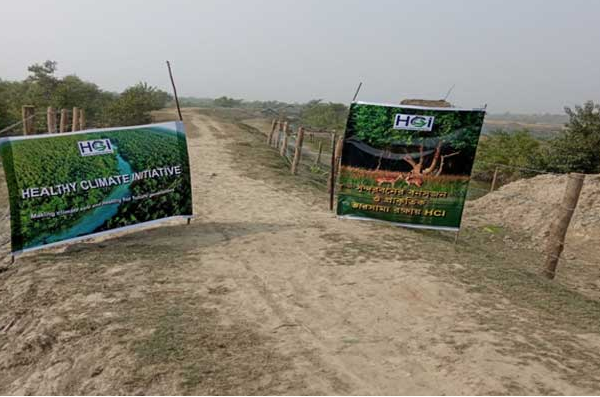
Team comprising of Shri Ashok Chatterjee, Shri Chandan Bhattacharyya, Shri D Ghosal and Smt Urmi Ghosal visited number of times before the onset of the Project. Finally team had a meeting with Local People, Local authorities and Forest Department. Details of report regarding plan of actions arrived during the visits featured in earlier report on Sundaban visit.
Modus operandi of Healthy Climate Initiative conforms to its network thinking in respect of cluster concept, multi layer plantation of different varieties of plants in sequence covering Mangrove, Miyayaki process for high growth plant and Fruit bearing trees for blending ecology and economy for sustainable process in line with Kaveri Calling concept for income generation in future. HCI believes putting more efforts and resources on protecting plants than the cost of the plants and carry out these out of their own investment. It was observed that many organizations did plantation without protecting them, which served more of the optics than real purpose.
.jpg)
Plantation activities carried out on both side of dam in different layers considering plant height for beautification of forest and soil accretion appropriate for particular plants. Total 1000 different types of sapling (App 2 feet height) have been planted on both side of dam out of that 800 mangrove plants planted in forest land and 140 food producing plant, 60 domestic plants have been planted in ownership land. The following are the configurations:-
A. Plantation process in wet & saline river side forest land.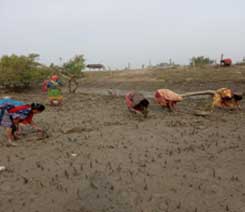
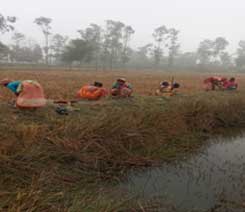
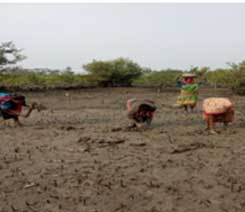
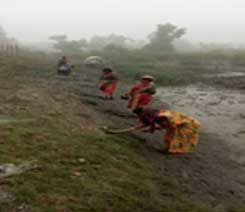
Suggested Method was Miyayiki process. However process could not be fully adhered to because of various practical reasons.
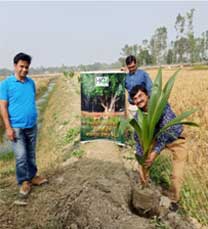
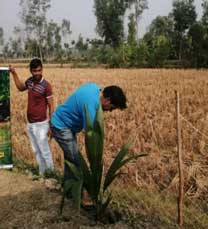
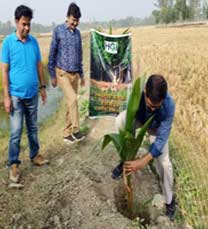
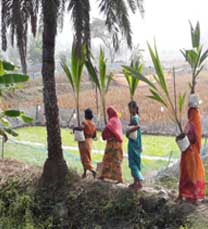

The rationale for planting Cocoanut trees and Beetle nuts is due to the fact that in the event of salt water ingress, these trees will continue to survive to support the family’s economy, albeit land degradation is distinct possibility in future.
Enter plantation activities were first barricaded by wire fence and net before plantation.

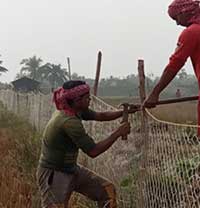
Modus operandi of Healthy Climate Initiative conforms to its network thinking in respect of cluster concept, multi layer plantation of different varieties of plants in sequence covering Mangrove, Miyayaki process for high growth plant and Fruit bearing trees for blending ecology and economy for sustainable process in line with Kaveri Calling concept for income generation in future. HCI believes putting more efforts and resources on protecting plants than the cost of the plants and carry out these out of their own investment. It was observed that many organizations did plantation without protecting them, which served more of the optics than real purpose.
In order to sustain this pilot this project in the long term, arrangement has been made to water, to put organic manure and care for these plants for next six months. Water pump with pipes will be procured so that watering can be done easily without putting much manual effort .
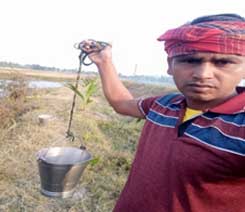
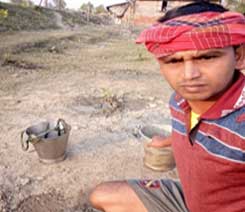
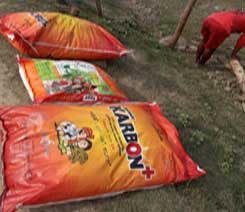
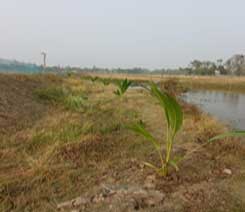
The plantation of mangroves around villages at the Periphery of the Sundarban has direct implication in rural livelihoods by better safety feeling by guarding them from Climate Disaster, Income Generating activities , creating jobs in nursery and planting activities, improve fisheries catch, provide flowers, fruit, fodder and fuel to rural communities and wildlife, improve carbon sequestration.
The ecosystem is showing degradation, with loss of important and globally endangered mangrove species due to felling, disease and altered freshwater inputs, changes to vegetation communities, intense and on-going coastal erosion, retreat and cyclonic disaster.
The Sunder ban delta belts have entered into the danger zone of submerge due rise of the sea level at an alarming rate and had to withstand devastating impact of the recent Amphan storm caused by the Development of vortex in the Pacific Ocean due to abnormal heat flux. Ghoramara & Moushimi Island are disappearing under sea.
Jharkhali is having around 40 km dam that protects this area from sea water ingress during high tide. Menacingly the level of the water during high tide is higher than the Jharkhali plane in most of the areas. An assessment has been made regarding possibility of plantation. Accordingly a clustering plan has been made comprising of 100 meter dam length which will cover Mangrove forestation as well as Agro forestry for income generating activities for adjacent landowners. In a first phase 10 km dam length will be covered which will cover about 100 clusters. This will cover about beneficiaries about 500 households.
Mangroves forests are highly productive and diverse ecosystems, providing a wide range of direct ecosystem services for resident populations. In addition, mangroves function as a buffer against frequently occurring cyclones; helping to protect local settlements and protect the remaining population of Bengal tigers. Knowing the above fact in brief, Jharkhali Gram Panchayat team has agreed to work with HCI in Sundarban for improving the ecology by plantation of mangrove trees across the 40 kilometer long river bed in Sundarban - Jharkhali Region and supporting local villagers to improve their economy.
Jharkhali is a village and a gram panchayat within the jurisdiction of the Basanti police station in the Basanti CD block in the Canning subdivision of the South 24 Parganas district in the Indian state of HCI Bengal. It is a flat low-lying area in the South Bidyadhari plains. The Matla River is prominent and there are many streams and water channels locally known as khals. A comparatively recent country-wide development is the guarding of the coastal areas with a special coastal force.
HCI have conducted meeting with Forest Officer, dedicated competent people and villagers on 10 November 2020 with its proposal and desire to work in Sundarban and obtained their whole hearted and overwhelmed approval. Consequently HCI has identified interested persons and beneficiaries in the Jharkhali to assist them in the plantation program. Accordingly First Pilot Project was executed.
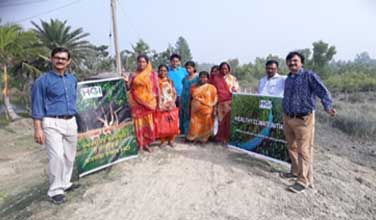
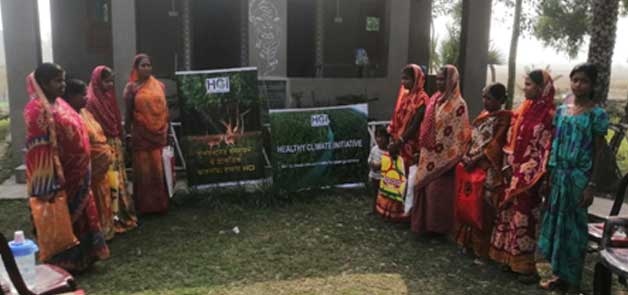
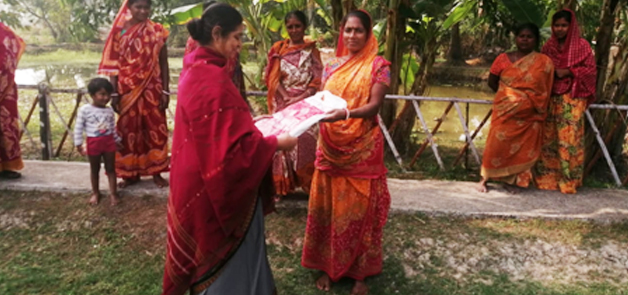
Cost Estimate (for each cluster i.e. 100 meter length)
Total Expenditure So far: - Rs 43650.00
Cost Estimate (for each cluster i.e. 100 meter length)
Expected Expenditure for First Cluster: - Rs 70,000.00 (Expenditure overshoot by Rs 15000.00)
Above expenditure expenses preclude all visits and associated incidental cost, which are borne by HCI visiting personnel.
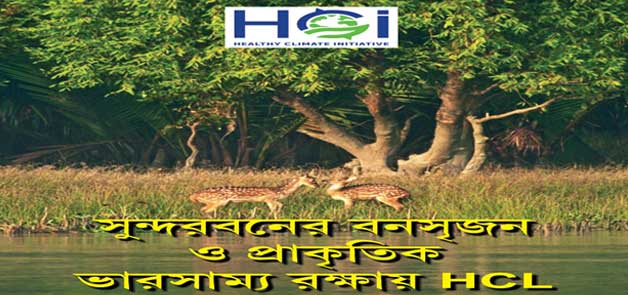
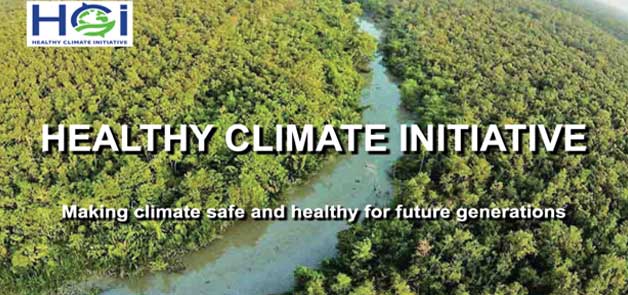
HCI is collaborating with the Wharton Club of the national capital region for climate restoration. The Wharton School of the university of Pennsylvania is the top business school in the US, some of the notable alumni include: Elon Musk,
Healthy Climate Initiative (HCI) has introduced Summer 2020 Internship opportunity for High School and College students.